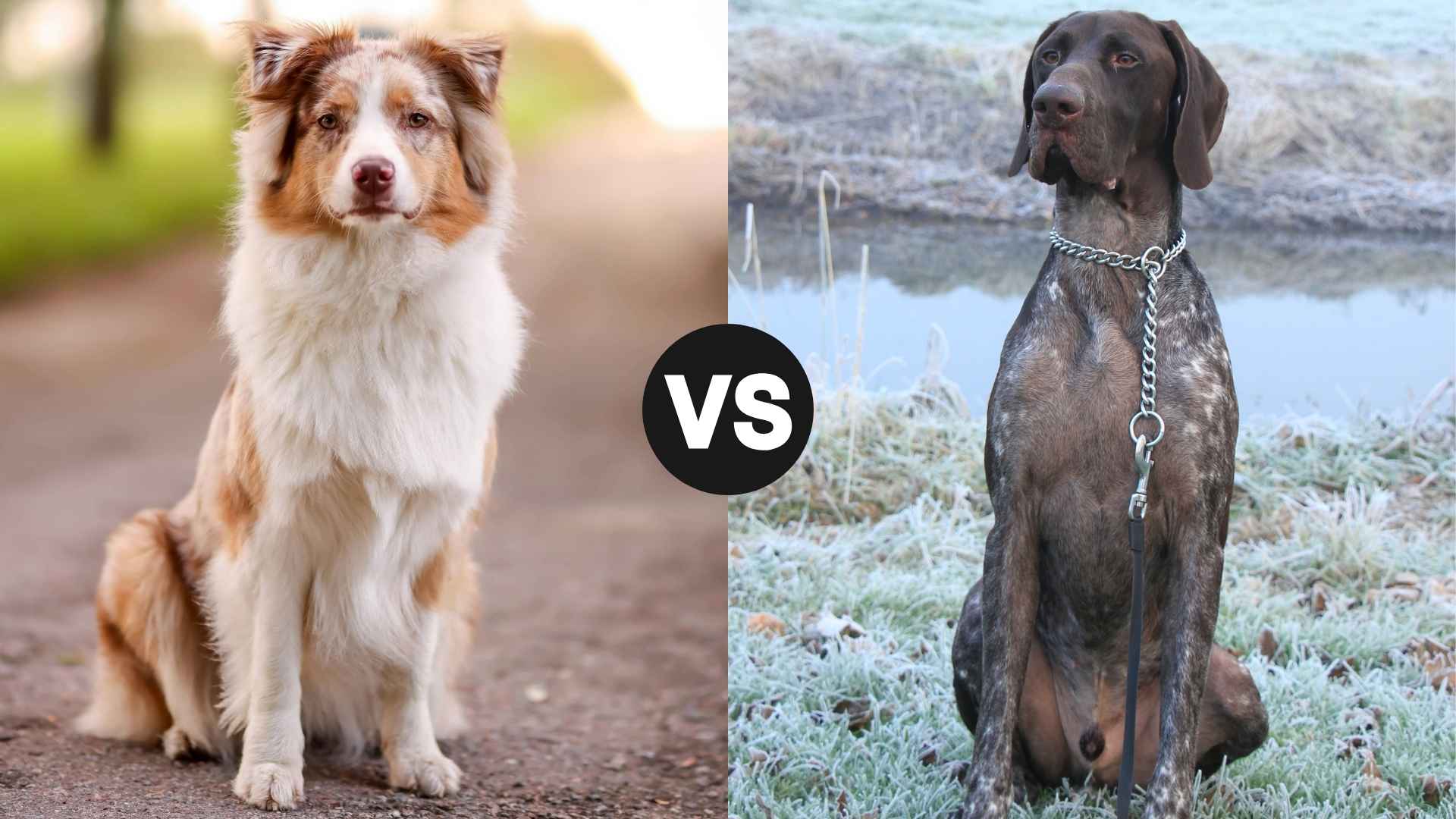Choosing between the Australian Shepherd and the German Shorthaired Pointer is like deciding between two equally charming overachievers at a dog show. Both are energetic, highly intelligent, and bred for a life of action—but their personalities, needs, and quirks couldn’t be more different.
One is a fluffy herding genius with a piercing stare and a workaholic attitude, while the other is a sleek, spotted hunting machine that craves adventure and thrives in the great outdoors.
If you’ve been wondering which of these athletic canines would be a better fit for your lifestyle—whether you’re a hiking enthusiast, a family with kids, or someone seeking a loyal companion—this comparison is for you.
We’ll dive into temperament, trainability, exercise needs, grooming, and more, so you can confidently decide which of these spirited breeds belongs by your side. Let’s find your paw-fect match.
Australian Shepherd vs. German Shorthaired Pointer
Size and Weight Comparison
When it comes to size and weight, the Australian Shepherd and German Shorthaired Pointer may both look like athletic go-getters, but they’re built a bit differently under the fur. Let’s have a look!
Australian Shepherd:
The Australian Shepherd, often affectionately called the Aussie, ranks among the most beloved and popular dog breeds in the United States, according to the American Kennel Club (AKC). The Aussie is like the athletic friend who never skips leg day or a grooming session.
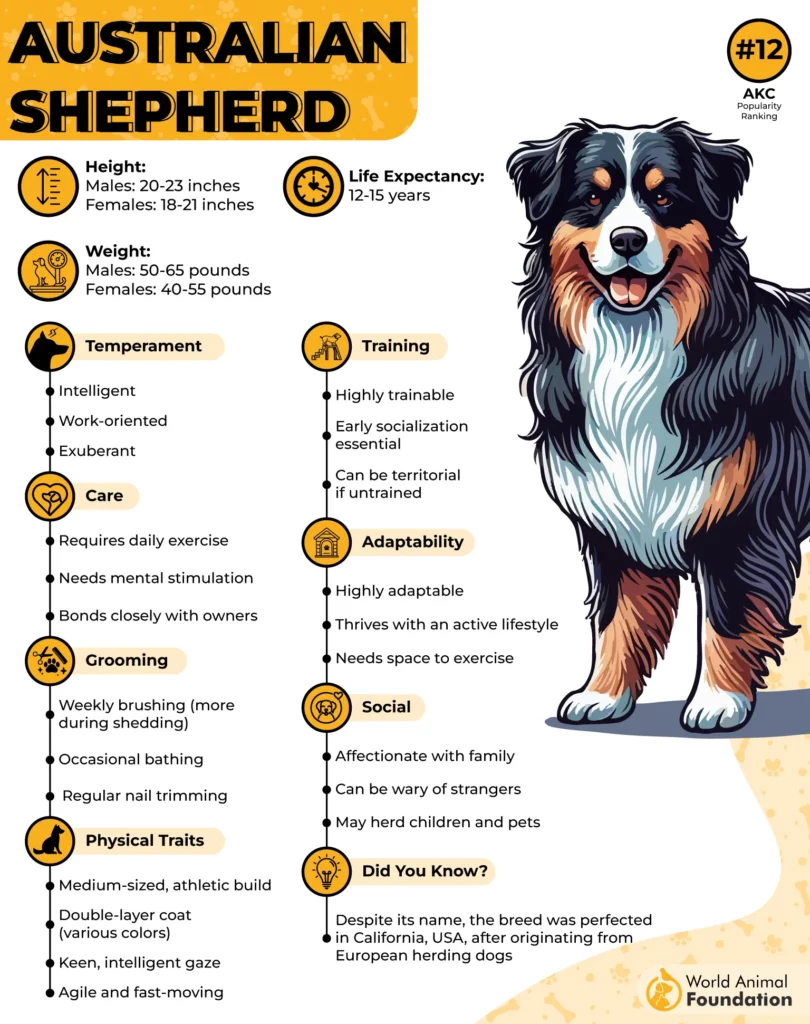
Males usually weigh 50–65 lbs, while females weigh around 40–55 lbs. Standing 18–23 inches tall, they have a stocky, muscular build with that signature “just stepped out of a salon” double coat.
German Shorthaired Pointer:
Now this guy is the lean, tall cousin who looks like he just finished a 10K… and is ready for another. GSPs weigh 55–70 lbs for males and 45–60 lbs for females. They stand a bit taller at 21–25 inches. Their coats are short, sleek, and say, “I don’t need a brush, I woke up like this.”
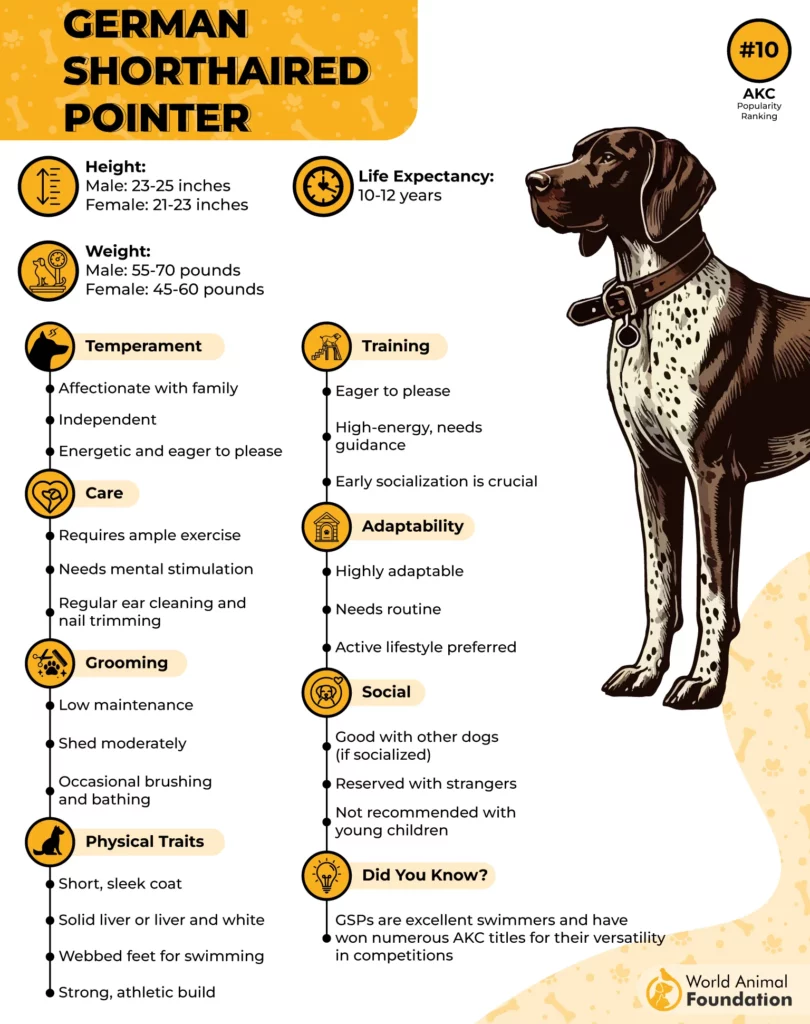
WebMD says German Shorthaired Pointers were originally bred for hunting on both land and in water, which led to one of their most fascinating traits: their webbed feet, perfectly suited for swimming.
Energy Levels and Exercise Needs
Let’s get one thing straight: both breeds were built to move—like, “maybe I should train for a marathon just to keep up” kind of move.
Australian Shepherd:
Bred to herd sheep all day, these active breeds aren’t just highly energetic, they’re workaholic energetic. An Aussie without a job is like a toddler with a sugar high—destructive, dramatic, and creatively chaotic. They need at least 1–2 hours of daily exercise, plus mental and physical stimulation. (Yes, fetch and puzzle toys. Sorry.)
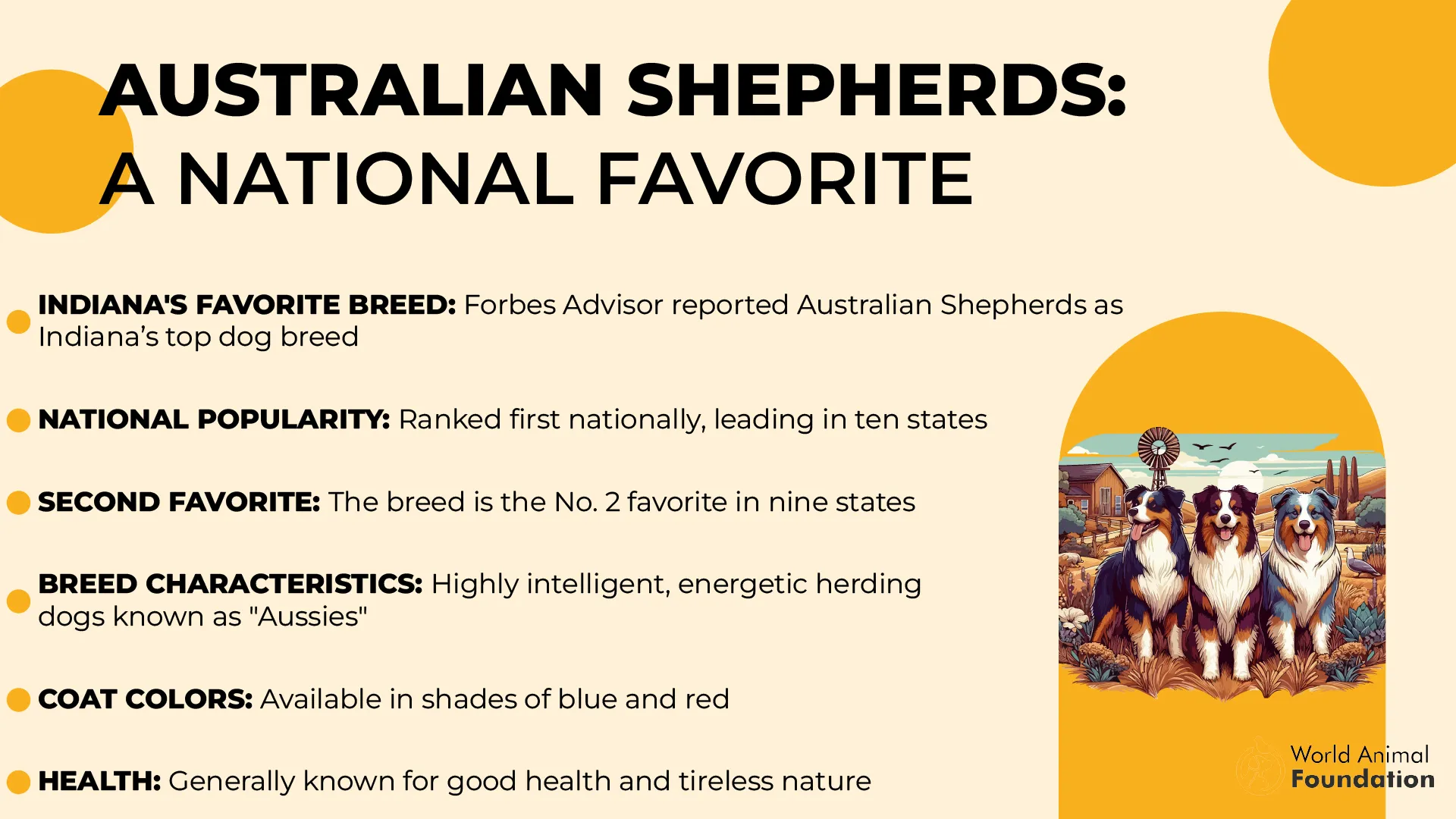
German Shorthaired Pointer:
GSPs are the ultimate running buddies. They were made for hunting and tracking, which means they can go full throttle for hours. And we mean hours. They need at least 1.5–2 hours of physical exercise, ideally something that taps into their tracking instincts—like hide-and-seek with treats or chasing squirrels (that they’ll never catch, but don’t ruin their dreams).
If energy were currency, both these dogs would be billionaires. Aussies need a job; GSPs need a mission. Apartment dwellers—proceed with caution.
Bite Characteristics and Behavior
Both the Australian Shepherd and German Shorthaired Pointer may flash a charming smile, but behind those pearly whites lie instincts shaped by generations of work, protection, and play—so let’s talk teeth, temperament, and what that means for you!
Australian Shepherd
Bite Force:
Estimated Bite Force: ~150-200 PSI
Australian Shepherds are known for their herding instincts, and that often comes with a tendency to nip, especially during play or when they’re excited. This isn’t aggression, but rather their natural drive to “gather” or control movement, whether it’s sheep, kids, or your unsuspecting ankles. With proper training and early socialization, this behavior is easily managed.
Personality Highlights:
Highly intelligent: They learn tricks faster than you can say “sit,” but they also get bored fast. You’d better stay creative or they’ll start training you instead.
Velcro dog: Aussies are deeply attached to their people. Don’t expect to pee alone ever again. PetMD notes Aussies are not naturally aggressive; however, their deep-rooted protective nature often leads them to be wary or aloof when encountering strangers for the first time.
Workaholic vibes: They’re happiest when they have a purpose—herding, agility training, even helping with chores (yes, some will learn to sort laundry).
Bossy boots: With their herding instincts, they may try to organize your guests at a party. “You there, stay by the snacks. You—stop wandering!”
Bonus Quirk: They’ll give you “the look” when you slack off. You haven’t experienced judgment until you’ve been side-eyed by an Aussie while binge-watching Netflix.
German Shorthaired Pointer
Bite Force:
Estimated Bite Force: ~120-140 PSI
German Shorthaired Pointers, on the other hand, were bred for hunting and retrieving, which means they typically have a “soft mouth” for carrying game. However, they are strong, muscular dogs, and if not properly trained or socialized, they can deliver a powerful bite when stressed or provoked. With the right guidance, though, they’re generally gentle and even-tempered.
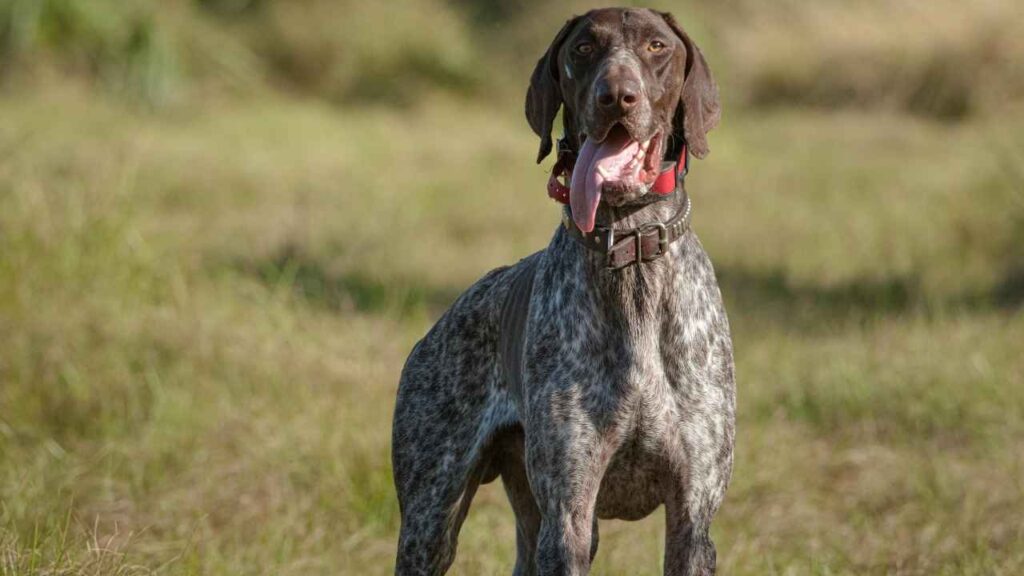
Personality Highlights:
Playful and goofy: GSPs are full of life, always ready for a game or an outdoor adventure. Zoomies are their love language.
Affectionate but needy: They love their humans a lot. Like “follow you to the bathroom and try to sit on your lap even though they’re 60 lbs” kind of love.
Clown energy: They’re not trying to be funny, they just are. Expect to laugh—a lot.
Sensitive sweethearts: GSPs don’t handle harsh discipline well. Scold them too firmly, and you might end up apologizing first.
Bonus Quirk: GSPs have no chill. They’ll jump on your bed, your guests, and possibly into a lake before you can yell, “NOOOOO—”
Health and Lifespan
While both the Australian Shepherd and German Shorthaired Pointer are energetic, loyal companions, their health quirks and life expectancies tell two slightly different stories, because even the most playful pups have their vet visit tales.
Australian Shepherd
Lifespan: 12–15 years
Common Health Issues:
Hip dysplasia (because no one escapes the hip drama)
Epilepsy
Cataracts and other eye issues, especially in merle-coated dogs
Collie Eye Anomaly (sounds fancy, isn’t fun)
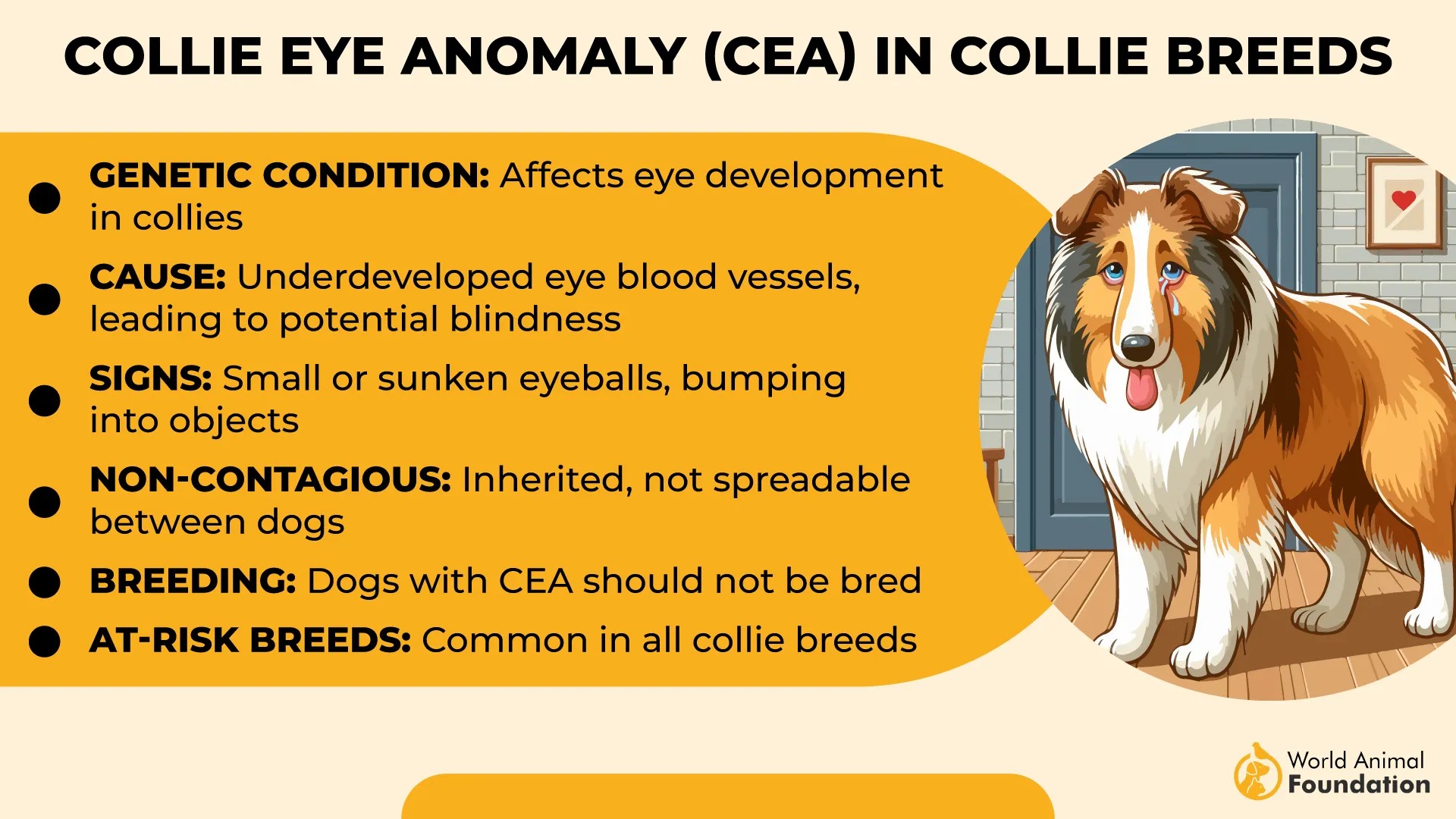
MDR1 gene mutation: makes them sensitive to certain meds (yep, even some flea treatments)
Health Tip: Regular vet visits and DNA testing (especially for MDR1) can help catch issues early. And yes, this breed absolutely benefits from pet insurance.
German Shorthaired Pointer
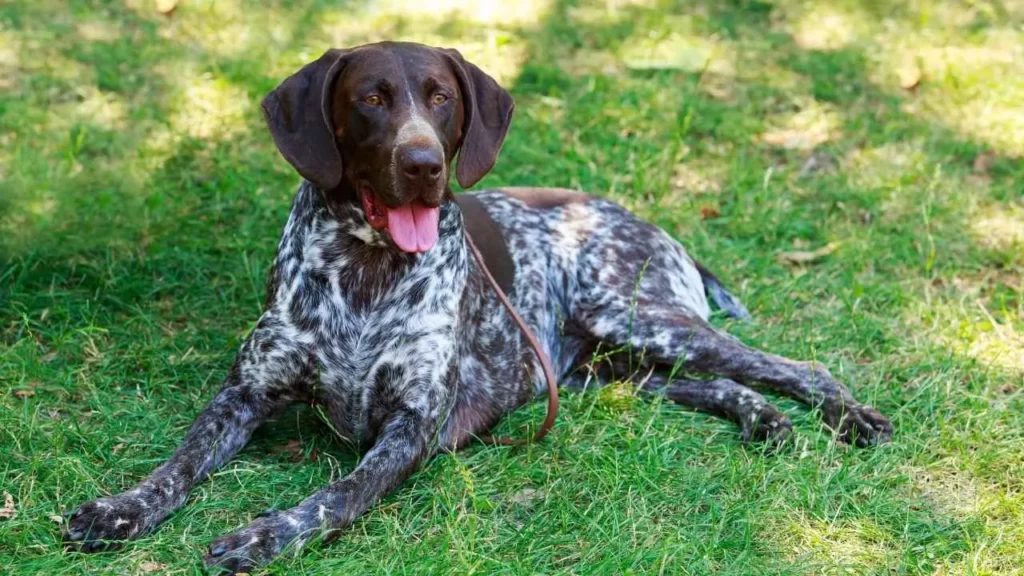
Lifespan: 10–14 years
Common Health Issues:
Hip dysplasia (because hips don’t lie—even for GSPs)
Bloat (gastric torsion, a serious condition requiring emergency care)
Hypothyroidism
Eye conditions like progressive retinal atrophy
Von Willebrand’s disease (a blood clotting disorder)
Health Tip: Because of their deep chest, bloat is a real risk—don’t let them eat a full meal and immediately do backflips (even if they insist).
Allergies and Grooming Requirements
When it comes to allergies and grooming, the Australian Shepherd and German Shorthaired Pointer offer two very different maintenance experiences, from fluffy tumbleweeds to low-fuss fur.
Australian Shepherd
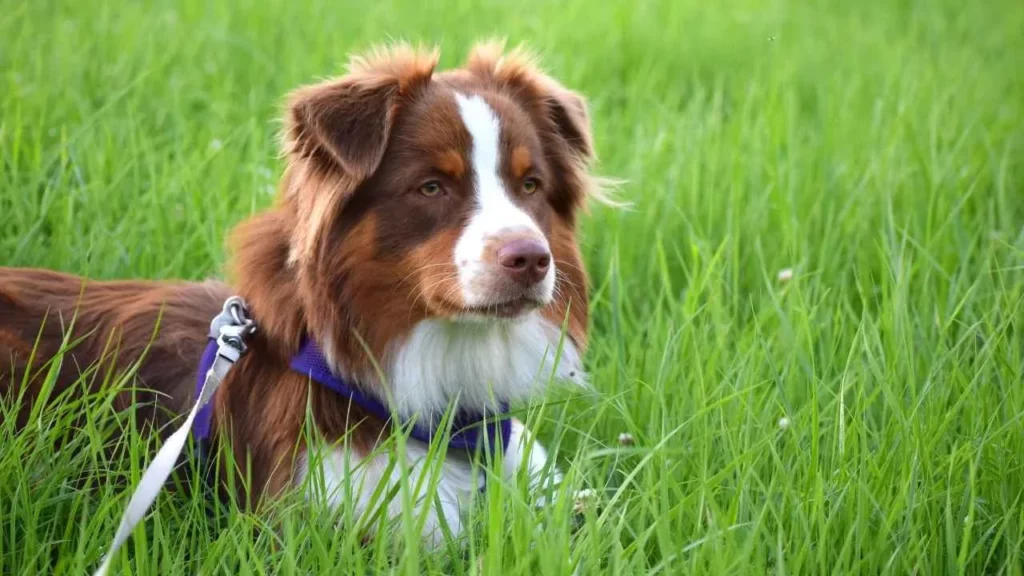
Coat Type: Double-coated fluff machine
Shedding: Oh yes. Like, “I just vacuumed 5 minutes ago” levels.
Grooming Needs: Moderate to high
Weekly brushing (daily during shedding seasons—aka spring and fall)
Occasional baths and regular trimming around the paws and ears
Allergy Friendliness: Not ideal for allergy sufferers. Aussies are heavy shedders with dander to match.
Grooming Reality: Be prepared to own a good brush, a better vacuum, and possibly a lint roller subscription service.
German Shorthaired Pointer
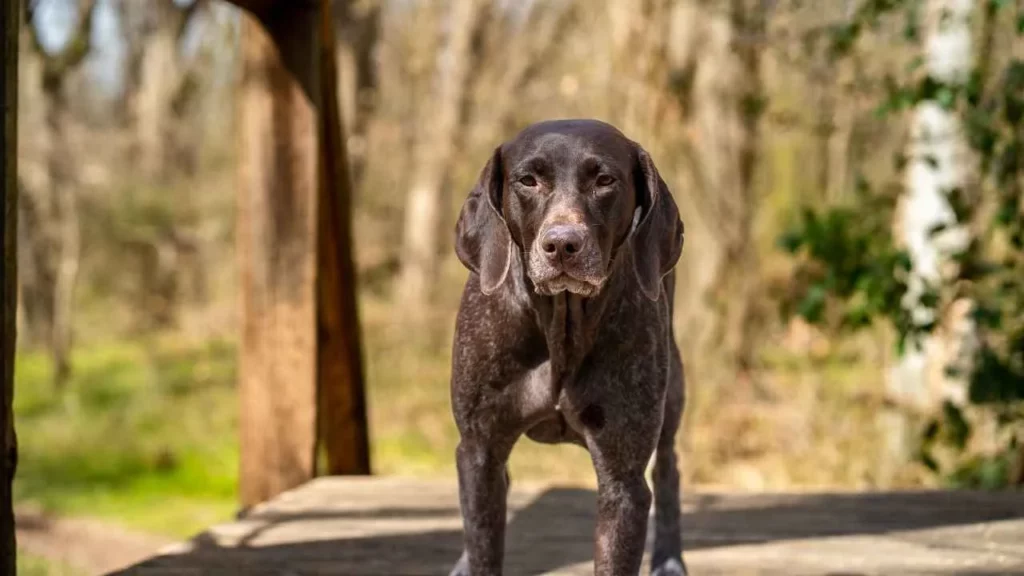
Coat Type: Short, sleek, and gloriously low-fuss
Shedding: Yes, but not aggressively. Their tiny hairs may still show up on dark clothes like they’re making a fashion statement.
Grooming Needs: Low
Occasional brushing to remove dead hair
Baths as needed (aka when they roll in something, which they will)
Allergy Friendliness: Slightly better than the Aussie, but still not hypoallergenic.
Grooming Reality: A five-minute brush session once a week? You can do it during commercial breaks. They’re that easy.
Conclusion
The Australian Shepherd and German Shorthaired Pointer are two highly trainable, intelligent breeds known for their strong work ethic, high energy levels, and suitability for an active lifestyle. Both working dogs have a strong desire for mental stimulation, physical activity, and consistent training using effective training techniques. These two breeds thrive with social interaction and do well around other pets, animals, and other dogs when properly socialized.
With distinct characteristics in temperament and body structure, the Aussie excels in herding while the GSP shines in agility and hunting. Both require a large yard, regular exercise, and engagement to maintain overall health. As some of the most intelligent breeds in the world, they learn new commands quickly and are excellent companions. For the right family, either breed is a great addition with the potential to be the best dog, depending on your lifestyle and needs.


